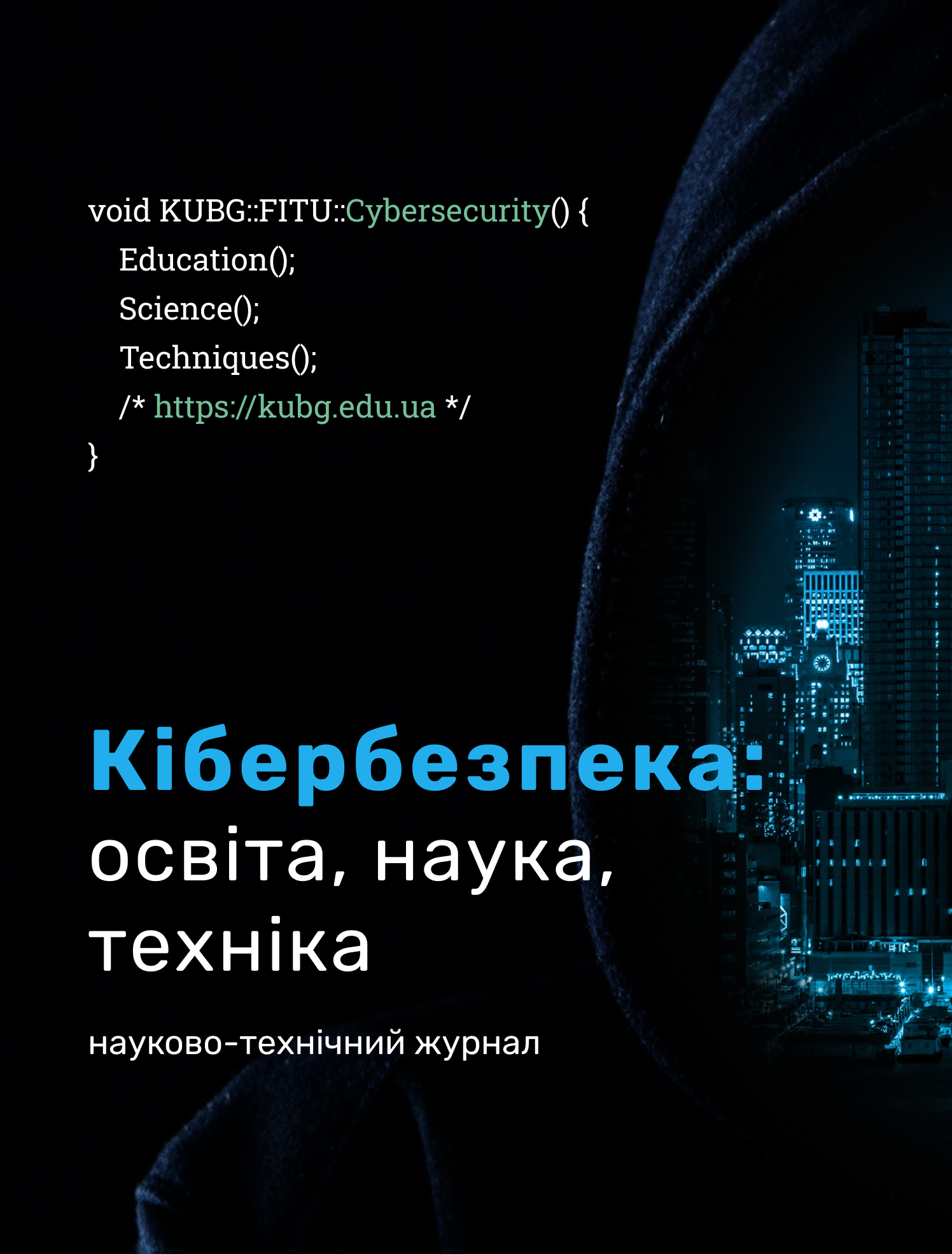THE METHOD OF EXCLUSION OF KNOWN SIGNALS WHEN SCANNING A SPECIFIED RADIO RANGE
DOI:
https://doi.org/10.28925/2663-4023.2023.22.3138Keywords:
radio signal; spectrum; exposure components; algorithm, known signalsAbstract
Obtaining access to information using the means of obtaining information secretly remains relevant at the present time. This is due to significant advantages, which include the impossibility of identifying a specialist who is doing listening or video monitoring of the premises. The specialist is located at a distance from this room. The integrity of the information, because the information comes from the original source. Therefore, the problem of detecting radio signals of means of covertly obtaining information is an urgent scientific task. This work is devoted to the problem of reducing the time of detection of signals of means of covertly obtaining information.
The detection of radio signals of the means of covert information acquisition is burdened by the fact that the means of covert information acquisition of the new generation work in a fully permitted radio range and their detection in a room bordering on other, filled radio devices is problematic. Now almost the entire available radio frequency spectrum is involved in the work of various radio transmitters. This complicates the detection of radio signals of means of covertly obtaining information, especially in large cities.
We are working on the development of a method for removing known signals, which allows, unlike existing methods, to take into account known signals even at the conversion stage. The conversion process is a necessary process in the operation of automated radio signal detection complexes. It is applied at the first stage, even before the signal detection process. This gives a great advantage, in terms of time, by about two times reducing the time of searching for random radio signals. This makes it possible to detect pulsed radio signals of short duration, that is, to detect radio signals of pulsed means of covertly obtaining information, and to partially solve the scientific task of detecting pulsed means of covertly obtaining information that work in rooms where information with limited access is processed.
The direction of further research is the development or improvement of methods and algorithms for determining by automated complexes the signals of means of covertly obtaining information, which work under the cover of radio frequencies authorized to work in this radio range.
Downloads
References
Laptіev, O., Barabash, O., & Zozulya, S. (2019). Vector signal analyzers for improving the method of finding means of obtaining information secretly. Telecommunications and information technologies: a scientific journal, (1), 55–61. https://doi.org/10.31673/2412-4338.2019.015561
Zamrii, I., et al. (2022). Fractal Functions and Their Application to Source Data Coding. ARPN Journal of Engineering and Applied Sciences, 17(4), 424–435.
Laptіev, O., Fedorenko, R., & Berestov, D. (2019). Improvement of the method of searching for digital radio bookmarks in the Wi-Fi range. Collection of scientific works of the Center for Military and Strategic Studies of the Ivan Chernyakhovsky National University, 2(66), 102–109
Laptev, A., et al. (2019). Analysis of Existing Signal Detection Methods, Development of a Technique for Calculating the Probability of Secret Information Capture. International Journal of Science and Engineering Investigations (IJSEI) Denmark, 8(92), 99–103.
Kikot, O., Laptіev, O., & Burdelo, E. (2020). Analysis of the problem of detecting means of covertly obtaining information in automated search complexes of radio-trading devices. Internet conference “Actual problems of cyber security”, 148–151.
Laptіeva, T., Lukova-Chuiko, & N., Sobchuk, A. (2022). Study of the main threats and assessment of the security of information systems. Math. Information Technology. Education, 101–103.
Ryabiy, M., Khatyan, O., & Bagatskyi, C. (2015). A model for detecting PR influence through publications on the Internet mass media. Informational security, 21(2), 131–139.
Theocharis, V., et al. (2015). Using Twitter to mobilize protest action: Online mobilization patterns and action repertoires in the Occupy Wall Street, Indignados, and Aganaktismenoi movements. Information, Communication & Society, 18, 202–220.
Savchenko, V., et al. (2020). Hidden Transmitter Localization Accuracy Model Based on Multi-Position Range Measurement. 2020 IEEE 2nd International Conference on Advanced Trends in Information Theory (IEEE ATIT 2020), 246–251.
Butko, T., Prokhorchenko, A., & Muzykin, M. (2016). An improved method of determining the schemes of locomotive circulation with regard to the technological peculiarities of railcar traffic. Eastern-European Journal of Enterprise Technologies. 5(3(83)), 47–55. https://doi.org/10.15587/1729-4061.2016.80471.
Molodetska, K. (2016). An approach to identifying organizational features of information operations in social Internet services. Priority areas of development of telecommunication systems and special purpose networks. Application of divisions, complexes, means of communication and automation in ATO: collection, 130–131.
Faraz, A. (2016). A comparison of text Categorization methods. International Journal on Natural Language Computing, 5(1), 31–44.
Laptіev, O., et al. (2020). An improved technique for choosing the sequence of priorities for servicing information flows. Scientific and practical magazine “Zvyazok”, 4(146), 27–31.
Svynchuk, O., et al. (2021). Image compression using fractal functions. Fractal and Fractional, 5(2), 1–14. https://doi.org/10.3390/fractalfract5020031
Zamrii, I., et al. (2022). Fractal Functions and Their Application to Source Data Coding. ARPN Journal of Engineering and Applied Sciences, 17(4), 424–435.
Yevseiev, S., et al. (2021). Synergy of building cybersecurity systems. Publisher PC TECHNOLOGY CENTER. https://doi.org/10.15587/978-617-7319-31-2
Svynchuk, O., et al. (2021). Image compression using fractal functions. Fractal and Fractional, 5(2), 1–14. https://doi.org/10.3390/fractalfract5020031
Kyrychok, R., et al. (2022). Development of a method for checking vulnerabilities of a corporate network using bernstein transformations. Eastern-European journal of enterprise technologies, 9(115), 93–101.
Laptіev, O., Kuzavkov, V, & Khoroshko, V. (2023). Systems for finding means of tacit acquisition of acoustic information. Millennium.
Published
How to Cite
Issue
Section
License
Copyright (c) 2023 Олександр Лаптєв, Сергій Зозуля

This work is licensed under a Creative Commons Attribution-NonCommercial-ShareAlike 4.0 International License.




